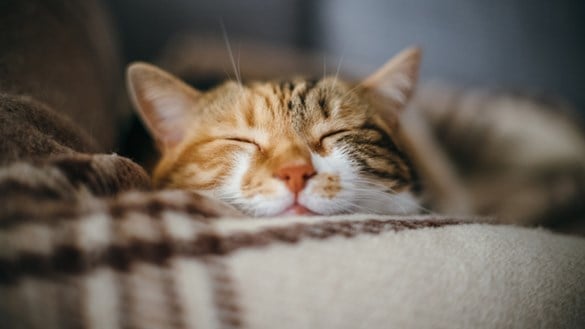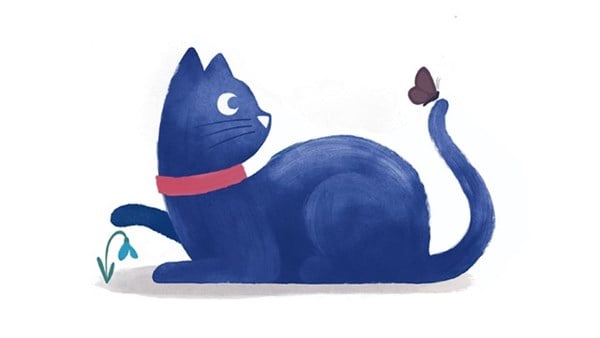Arthritis In Cats
Arthritis can affect cats at any age, but it usually occurs as they get older. Learn how to spot the signs and adapt your care.

At what age do cats develop arthritis?
According to Cats Protection, more than 80% of cats over the age of 10 suffer from arthritis, but it often goes undiagnosed. This common problem refers to inflammation of their joints, causing pain, discomfort and stiffness.
Inside their joints, the surface of the bone is usually covered with a thin layer of smooth cartilage and lubricated with a small amount of fluid, which allows the joint to move freely and without friction.
Arthritis occurs when the joint is damaged or its naturally smooth surface changes, resulting in the rough bone rubbing together. Not only is this very painful for your cat, but it also further damages the cartilage and causes new bone to form around the joint, making it stiffer and limiting movement. This is called osteoarthritis, or degenerative joint disease.
What causes arthritis in cats?
Just like humans, cats generally develop arthritis as they get older due to general wear and tear on the joints. However, it can occur at an early age following an injury.
Although arthritis is widely publicised in dogs, it’s often under-diagnosed in cats due to their innate ability to hide pain. Owners are also less likely to watch their cat exercise, so less likely to see any signs of joint stiffness.
Signs and symptoms of arthritis in cats
Arthritis is a progressive disease and symptoms develop and worsen over time. However, cats are very good at hiding symptoms of pain so it can be difficult to identify. You may notice that your cat becomes reluctant to play or use stairs. They may avoid jumping up or down from high ledges that previously wouldn’t pose a problem for them.
The condition becomes worse in cold weather, so if they appear stiff or slow during the winter months, this could be a sign of arthritis.
Other symptoms include:
- Reduced movement
- Reduced grooming with matting in hard-to-reach areas
- Irritability and a change in attitude
- Less activity (for example, bringing you fewer ‘presents’ indicates their inability to hunt)
- Toileting outside of the litter tray
If you think your cat may be showing signs of arthritis, speak to your vet for a complete health check and advice. They may recommend further x-rays or other scans to diagnose the condition.

Treatment for arthritis in cats
There’s no cure for arthritis, but the pain can be managed with new generation injections, such as monoclonal antibody injections, anti-inflammatories, painkillers and alternative therapies, such as hydrotherapy, laser therapy, massage and acupuncture. These can help relieve stiffness and improve mobility to support the surrounding muscles. In some cases, surgery can help but it’s unlikely to restore perfect joints for life. New stem cell therapy is also becoming more readily available, with seemingly promising results.
Managing arthritis in cats
Alongside pain management, there are a few ways you can help alleviate pain and manage your cat’s arthritis. Providing a balanced, high-quality diet and maintaining a healthy weight with gentle exercise can reduce pressure on the joints and keep them moving. Your vet will happily advise you on the best exercise for your pet, but little and often is likely to be your best bet. If your cat is limping, they’ve probably overdone it and need to rest.
Ensuring they have a soft, comfortable bed in a warm, draft-free spot will support their aching joints while they’re asleep – orthopaedic beds are a great option. A ramp up the staircase will eliminate the need for them to jump up or down and switching to a low-sided litter tray will help them climb in and out. Tiled and laminate floors can be slippery and difficult to navigate for arthritic cats, so lay rugs and mats down or use cat-friendly paw wax to give them more grip and prevent falls.
If you are worried that your cat may have arthritis, speak to your local Medivet practice where they'll be able to advise you further.

Senior Cat Healthcare Plan
Our senior healthcare plan includes all the benefits of the adult plan, plus a few extra checks to help keep your cat stay healthy and thriving in their older years.
Learn more

